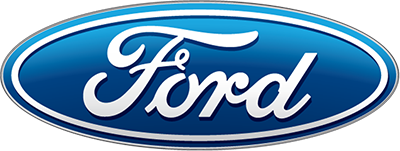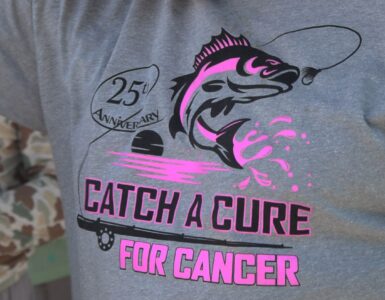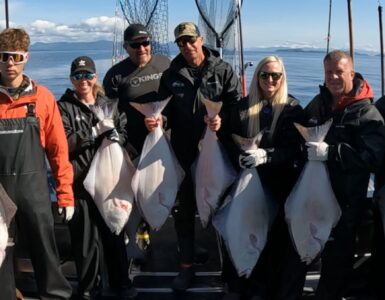Thanks for tuning into KSL Outdoors, I’m Adam Eakle, along with Paul Thompson, Avery Cook and Brett Wonnacott. And Paul we are finishing up our Utah Cutthroat Slam and you’ve got a shotgun in your hand. I know, we are going to start with a cast and blast. We’ll get some sage grouse and then let’s go get our Yellowstone. That’s pretty cool. It will be cool. Yea and it’s the opener of the duck hunt I believe today and look we’ve got Brett Wonnacott out here. They dragged me to the desert. We did. Avery is going to give us a look at these birds, the sage grouse, and we’ve already spotted them, let’s go get them. Alright let’s do it.
Get up!
They are one of my favorite species to hunt out here. It’s a real mellow hunt. Something that’s easy to take beginners and family out on.
Just wandering around good sage brush habitat. You are pretty likely to run into them.
We came to Box Elder County to complete our Utah Cutthroat Slam. Something we started this past spring.
Seek!
We also came to hunt the greater sage grouse. That’s when I found out there’s an upland game slam for hunters as well. That’s where you choose one of five different slams from rabbits, grouse, turkeys, pheasants, even chukars. The cost is twenty dollars for adults, ten for youth.
So you go pick up your card and then you come out in the field, hunt what you are going to hunt.
Whoa!
I’m done. Me too. That’s four Adam.
And then you just take a picture of yourself, your slam card and the animal you are hunting for the slam. Have that on your phone and just bring that back to any of the retailers and you can get one of the coins, which are the prizes we are giving out.
Hold. Drop! Dead bird fetch!
What the program is designed to do is a few things. One, is to raise money for conservation projects.
We are able to use that money as match to get a three to one Federal match on most of these projects.
Get it Adam! Good shot. He’ll get that one for us.
Good boy Tic. Drop. Loose. Drop. Good boy, Tic. Tic here dead bird.
Brett as much as you’ve hunted birds. This is your first sage grouse. This is my first sage grouse. Yea. Cool, they are a big bird. First bird as well Adam? My first bird too. Congratulations guys, there’s a lot of birds out here. I’ve been coming out to this country for 20 years and consistently getting birds. They are big bird, they are heavy. That’s a four pound bird there. These are the small ones. These are the small ones, huh? That’s cool and by law, since we’ve tagged, you’re tagged out. Yep. We’ve got to tag these. Yeah, let’s tag them before we hunt further. Ok, let’s do it.
Greater Sage grouse populations have declined for decades. Mostly due to the loss of sage brush habitat.
Last year the U.S. Fish and Wildlife Service determined that the Greater Sage Grouse was not warranted for listing under the Endangered Species Act. Western States including Utah have invested tens of millions of dollars in Sage Grouse Conservation. Two tagged grouse. These conservation measures are making Utah’s Sage-grouse habitats more resilient, redundant and capable of supporting more Sage-grouse. Utah does issue a limited amount of tags for sage grouse and the DWR gets valuable data from the harvest.
The hunt allows the state to do a number of things. One, we can get some pretty valuable data. So if you are out hunting and you see a wing barrel. Really appreciate it if you’d pull a wing off. You can just cut them at the shoulder, toss it in that wing barrel. What that allows us to do is look at these wings and determine sex and age off of the wing so we can get an idea of what our production is that year.
Oh there we go. There’s your point. Whoa!
There it is! Get it! Good shot.
Since it’s a hunted species we can use license dollars generated from selling tags and selling licenses to put towards habitat work and management of the species.
Look at the tail. Oh that’s beautiful, look at that.
Well hey our limits and we are only a quarter of a mile from the truck. This isn’t chukar hunting. No, this is easy compared to that. Yea, easy walking and a big bird and boy they are just pretty Avery. That is a neat looking bird. They are quite magnificent little guys. Yeah, even prettier when they strut and we’ll see how they taste for table fare.
Welcome back to KSL Outdoors, I’m Adam Eakle along with Paul Thompson and boy we had an amazing morning this morning. Oh we did. That was cool. We had a first. A lot of firsts for you today. A lot of firsts. Lot of firsts. Now we are going to try something different. We are going to try and catch and finish our slam with the Yellowstone cutthroat. Yup, I think we can do it today. It’s a long drive out here. It is a long drive and we are about as far west as you can go in Utah. Alright, let’s go hit it. Ok
Oh here we go. Come on. There he is. Oh! Oh Adam. That was your only chance at a Yellowstone.
This area out in Northwestern Box Elder the Raft River drainage. All of these little streams flow into the Raft River which flows into the Snake River and that’s why we have native Yellowstone cutthroat out here.
There he is I got him. Keep it on the shore!
Alright let’s check it out my first Yellowstone cutthroat in a native portion of Utah and more importantly. My slam is done. Look at that guy. Nice.
That’s the spotting on this is the large spots towards the tail and then fewer as you get closer to the head. It’s just classic Yellowstone patterns, yup. Beautiful cuts for a cutthroat. Oh great fish.
We introduced you to the cutthroat slam back in April. In a nut shell. On a little three-weight. That’s a good fight, Adam! The Utah Cutthroat Slam is a challenge to anglers to catch all native cutthroat found in Utah in their native range. Whoo! That’s a great way to start off, isn’t it? We started with the Bear River Cutthroat in Bear Lake. We then showed you the colorful Colorado River cutthroat down on the boulders, then… Beautiful Bonnie, it was on to the state fish, the Bonneville cutthroat that we found in Millcreek. Today
It’s a good fish.
We’re catching the Yellowstone Cutthroat in its native range on the Raft River Mountains.
So in western Box Elder we have four streams on Sawtooth Forest that hold Yellowstone Cutthroat Trout. We have One Mile Creek, and its major tributary, Sawmill Canyon. We have the headwaters of George Creek, We have Johnson Creek and its tributaries and we have Wildcat Creek. There it is! So all four of those are easily accessible on the Sawtooth National Forest. Call our Division of Wildlife office, northern region and we’ll give you all kinds of information on how to go and catch fish here. There’s also a few streams that are on private land. There we go! Some of it is accessible, just respect private property if you decide to wander off the national forest. Come out here, get your slam, I mean you can’t ask for a nicer, prettier cutthroat trout than that.
You could work it anywhere from the tail of that all the way up to the top. But I wouldn’t doubt there is some fish hanging right at the top of that where that drops into the pool.
The easiest way to slam up is to go to the Utah Division of Wildlife website, wildlife.utah.gov and you’ll see a teaser for the cutthroat slam there. You can also find out more information at utahcutthroatslam.org.
People are pretty engaged in this, there is discussion and there is pride for accomplishing this. And, you know, you should feel pride when you do this, it’s a cool thing.
There it is. Get him out of there. Nice fish too. Alright! Jared nice job buddy. Nice fish. Look at that, That is a nice fish.
This is working out alright today. A limit of grouse, we got what 8 cutthroat under our belt so far.
Double. Look at that. There they go. Oh and he gets off. He might have taken your fly. That was cool. Hey what a neat little stream and what a great opportunity right? You know there is a lot of opportunities for Yellowstone cutthroat out here. There’s some nice fish to be had. Yeah. It’s a great fish. For a stream you can jump across, and we’re catching 11-12 inch fish today. Yea that’s great. Pretty impressive. And most important we finished our slam. We did. Took us all summer, but people can do this faster, they could even start it right now. You can start now, you can get one fish and get the rest next year if you have one left and you are into hunting right now, don’t worry about it, get it next year. You can do it as many times as you want so if you’ve completed it this year, go do another next year.
Welcome back to KSL Outdoors, here on the Raft River Range as we highlight the Utah Cutthroat slam.
We’ve had more than six hundred already sign up for it.
That’s a nice fish.
We’ve already had our first project that was funded by cutthroat slam money so things are going, really, really well.
This is Johnson Creek, Sawtooth National Forest.
You know, in 2001, Paul was part of the crew that discovered pure genetic populations of Yellowstone cutthroat trout here in the Raft River mountains. Ever since then the DWR has been working on projects to restore and enhance the habitat and the population of Yellowstone cutthroat trout here in their native range.
This is a stream the Division has been working on for probably five or six years to try and restore Yellowstone cutthroat trout. The interesting thing about this stream is we had a pocket of Yellowstone cutthroat in the headwaters about the top three miles, but brook trout have been just taking this stream over and we were afraid we were going to lose that population. So we wanted to chemically treat the brook trout out but we had to save the Yellowstone cutthroat trout as the source for this stream so we did kind of a unique project on this stream where we put in a barrier in the headwaters. We spent three summers with a backpack shocking and a crew of 12 and we did 11 passes through 3 miles of stream to remove brook trout. We were successful to protect that cutthroat population and that allowed us to then chemically treat the lower ten miles of this stream where the entire drainage now is native Yellowstone cutthroat trout.
Eventually this is going to be our gem for Yellowstone cutthroat trout in Northern Utah.
We’ve had more than 70 kids sign up for it. Which is wonderful. We’ve had people from 20 different states sign up for it.
I think both Paul and I are both surprised a little bit by the popularity of it. I think anglers in Utah and the rest of the country were kind of hungry for something like this here. And you know, we are really excited about the opportunity for anglers to learn about the different species of cutthroat in Utah and their home range. Their historic range.
There’s a fish.
And it’s important I think to just appreciate what was here when the pioneers arrived. It’s also important to keep in mind that these species have all been petitioned for listing on the Endangered Species list and we need to protect the populations where they exist.
You did it! I did it. I’m glad you didn’t have to use my fish from Bear Lake. I know. I’m going to frame that. You should frame it. This is frame worthy and the coin is special as well. Yeah this coin is so cool Paul had to do it twice so he could display both sides. I did. I completed it twice this year and got it framed with the certificate so I can display both sides of the coin. Very cool, hey get out participate in the cutthroat slam. Remember you can start it now, finish it next year finish two years from now. Or ten. Yeah, or ten.







Add comment